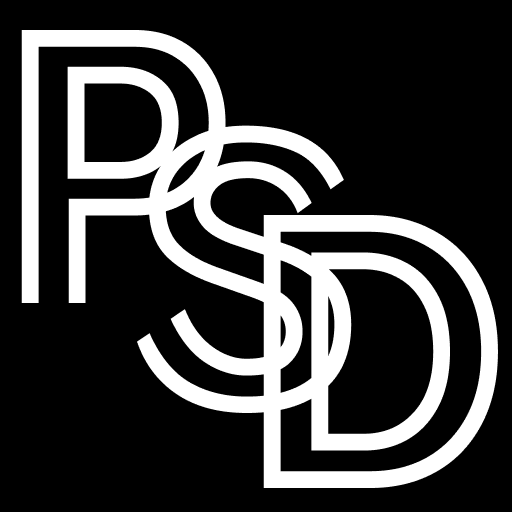5 Unique Ways Claude Helps Tech Leaders Supercharge Their Writing
Writing is your most underutilized leadership tool… Claude helps you supercharge it
Let’s stay connected—find me on LinkedIn and Medium to further the conversation.
Picture this: You're in your third Zoom call of the morning when your phone buzzes.
It's your CEO, pinging you via Slack with a single paragraph. Four sentences instantly clarify three weeks of confusion and competing priorities. Your next meeting suddenly makes perfect sense. You use those insights to lay things out for your team, and you can feel their energy shift.
Everyone knows what they have to do next.
That's the power of writing done right. And too many tech leaders are leaving it on the table.
Instead, I see leaders spending hours perfecting pitch decks and optimizing dashboards, but they treat writing like digital “busy” work.
But they're missing the most scalable leadership tool ever invented, one that continues to work even while they sleep, leads meetings they'll never attend, and multiplies their influence across every corner of their organization.
So what does writing mastery actually look like in practice? Let's examine one of the most influential examples in tech history.
The Bezos Letters
Jeff Bezos figured this out decades ago.
His annual shareholder letters went beyond simple investor updates and broke new ground, creating a strategic North Star for every Amazon employee. Think of them as an organizational sports strategy playbook, capturing Amazon's values and culture of ownership, innovation, and relentless customer focus so everyone could run the same plays together.
And Bezos was the master head coach, orchestrating and architecting a dynasty of winning seasons through words.
What made these letters revolutionary wasn’t just their content, but their cascading influence throughout the organization
Scaling Impact
But it’s easy to overlook just how transformative the Bezos letters were on every Amazonian.
His sentences modeled the clarity of thought he expected from his team. His paragraphs were structured to reinforce what mattered most. Every letter introduced a new, groundbreaking concept that rippled through both the tech press and the thousands of daily decisions that drove Amazon forward.
The leaders who master this go beyond being just skilled writers and learn to become force multipliers.
The Strategy Paradox
But it would be a mistake to think the leaders who write the most are the most naturally gifted.
No, the ones who are most effective are the ones who cracked a code everyone else is still fumbling with.
Most leaders treat writing as an “output” instead of a valuable thinking tool. It's like using a Swiss Army knife only as a bottle opener when you could be slicing through problems, untangling complexity, and crafting creative solutions. You're missing 90% of its power.
The real strategic choice lies in recognizing the power of writing to create clarity.
The Power of the Word
Research from the Harvard Business Review backs this up.
A study of executive performance found that leaders who dedicated just fifteen minutes daily to reflective writing demonstrated measurably better decision-making and team alignment over time. Why?
Writing forces your scattered thoughts into a cohesive narrative, surfacing assumptions and crystallizing clarity that stays hidden in the noise of survival-focused daily firefighting.
So how can today's leaders harness this power without adding hours to their already packed schedules?
Your Thought Partner
And this is where Claude can become your strategic advantage.
Think of it like having a trusted thought partner, not to think for you, but to help you upgrade your level of thinking to organize your ideas more rapidly and with less friction.
(For those unfamiliar, Claude is an AI assistant designed to collaborate on complex writing and thinking tasks, like having a brilliant editor and thought partner available 24/7.)
Here are five ways tech leaders are using Claude to transform their leadership impact through writing. As a side note, this piece was written in collaboration with Mike Goitein, author of Product Strategy Decoded. If you are not familiar with his work, I encourage you to check it out!
1. Cut Through Information Overload
The Strategic Problem: You're drowning in signal and noise. Market reports, internal updates, and competitor analysis all have valuable insights crucial to your business. But they’re buried deep in information avalanches, and you don't have time to excavate them.
Picture Sarah, a VP of Product, drowning in 47 documents that "require her attention" this week. She's not failing because she can't read, but because trying to extract what matters most from what’s useless has become a full-time job.
How Claude Changes the Game: It becomes your insight archaeologist, cutting through volume to surface what demands leadership attention.
Try This Approach:
Analyze this [DOCUMENT/REPORT] and extract:
1) The 3 most critical insights requiring immediate leadership attention
2) The top business risk and opportunity identified
3) A 2-minute executive briefing script
4) 3 specific next steps with owners and timelinesThe Result: Less overwhelm, more strategic clarity. You make faster decisions because the signal finally cuts through the noise.
2. Adapt Every Message to Its Audience
The Strategic Problem: One message doesn't fit all minds. Your update to the board needs careful crafting and a completely different language than your update to your engineering team, but creating three versions feels like triple work.
Think of Claude here as a United Nations translator, capable of sharing the same core message while speaking in each audience’s unique language. Your CEO speaks revenue, data, sales, and building competitive advantages. Your engineers speak in terms of effort, systems, technical debt, and scalability. Your customers speak in terms of their most deeply-felt problems or the solutions they’d like to see.
How Claude Changes the Game: It becomes your organizational translator, shifting tone, focus, and depth for each audience while keeping your core message intact.
Try This Approach:
Take this core message and adapt it for three audiences:
1) Board members - focus on strategic impact and ROI
2) Engineering team - focus on implementation challenges and technical requirements
3) Marketing team - focus on customer-facing benefits and messaging opportunities. Keep each version concise and maintain a confident, solution-oriented tone.The Result: Everyone hears what they need to hear to trust your leadership and take action.
3. Multiply One Insight Across Many Formats
The Strategic Problem: You have crucial breakthrough insights trapped in single formats. Each team consumes information differently. Some may prefer email, others need slide decks with bullets, still others prefer quick Slack channel updates. Adapting your best thinking and the right update to each channel feels overwhelming.
The smart leaders I know don't need to have more ideas. They just need to have fewer, clearer ideas that scale and travel farther. Like a master painter who transforms one background canvas into five different paintings, they skillfully design their insights for maximum reuse and distribution.
How Claude Changes the Game: It becomes your format multiplier, transforming one powerful idea into multiple communication vehicles.
Try This Approach:
Transform this insight into 4 formats:
1) An email for cross-functional team leads
2) A LinkedIn post optimized for engagement
3) Live meeting talking points with supporting data points
4) A reference document for future use in the team knowledge baseThe Result: One insight, infinite reach. Your best thinking extends across every communication channel, poised to convey its crucial information where it's most needed.
4. Edit Like a Pro in Minutes
The Strategic Problem: Your draft captures your thinking, but it's not sharp enough to cut through the attention chaos your audience faces daily. You know it could be better, but you don't know how to improve it. And your meeting’s coming up, and you simply don't have time for multiple revision rounds.
There's a moment every leader recognizes: the gap between "good enough to send" and "good enough to inspire action." Most settle for good enough. Influential leaders consistently make it “great.”
Try This Approach:
Analyze this draft and suggest improvements for:
1) Structure and flow
2) Clarity and conciseness
3) Persuasive impact
4) Tone alignment with my intended audience of [specific audience].
Maintain my authentic voice while making it more compelling.How Claude Changes the Game: It becomes your editorial partner, strengthening structure, refining tone, and sharpening impact with surgical precision.
The Result: Professional-level editing that transforms solid drafts into compelling communication that moves people to action.
5. Turn Chaos into Clarity
The Strategic Problem: Your best insights are scattered across voice memos, random notes, and late-night brainstorms. You're generating valuable thinking, but it's splintered across multiple channels and useless until you find the elusive time to organize it.
Picture your brain like a powerful computer running dozens of applications simultaneously. Great insights are happening in there, but they're scattered across different mental processes. Most leaders never develop a reliable system to transform this distributed thinking into structured communication.
How Claude Changes the Game: It becomes your thought organizer, finding themes in your brain dumps and building logical flow without losing your authentic voice.
Try This Approach:
Transform these scattered thoughts into a coherent document:
1) Identify 3-5 main themes
2) Create logical flow between ideas
3) Add smooth transitions
4) Suggest a compelling title and conclusion
5) Maintain my authentic voiceThe Result: No more wasted insights. Your scattered thinking becomes structured wisdom that your team can actually use.
Now, imagine combining these approaches into a systematic leadership advantage...
Your Writing Leverage System
These five approaches work together as a strategic system, allowing you to regain control over your best ideas and key messages for each stakeholder and scale your impact through consistent communication excellence.
Start by cutting through information overload to identify what matters. Adapt those insights for different audiences. Multiply your best thinking across multiple formats. Edit everything for maximum impact. Through it all, consistently challenge yourself to simplify and clarify to transform your scattered thoughts into organized leadership communication.
Claude can help you not only write faster, but lead more effectively. In a world where attention is the scarcest resource and clarity is the ultimate competitive advantage, your ability to communicate compellingly is no longer a “nice to have.”
It's how you multiply your impact and win.
Interested in more?
Follow Mike Goitein for going from product confusion to strategic clarity here.
Follow Joel Salinas for more Leadership and AI insights here.
Which approach will you try first to amplify your leadership through writing?







Writing is one of the most powerful ways to bring your ideas into life. In the hands of the right leader, writing can transform organizations: first by transforming the leader himself, then by transforming the audience.
This is a great resource you guys made! Haven't explored Claude yet, but from what I've heard it's a pretty useful tool.
The distinction between writing as "output" vs. "thinking tool" is fascinating and feels like something most leaders stumble over. It's almost like the difference between using a meeting to share decisions versus using it to actually make better decisions.